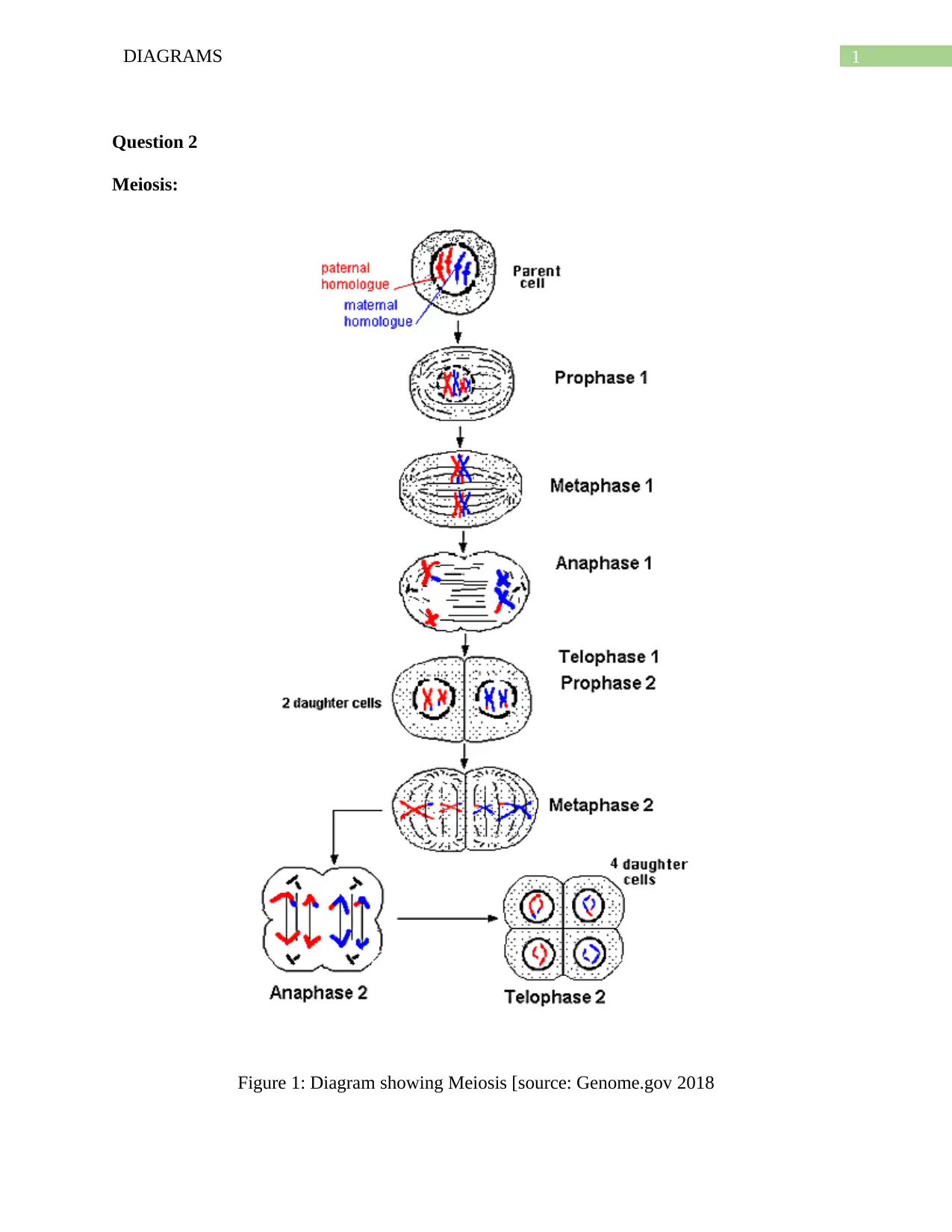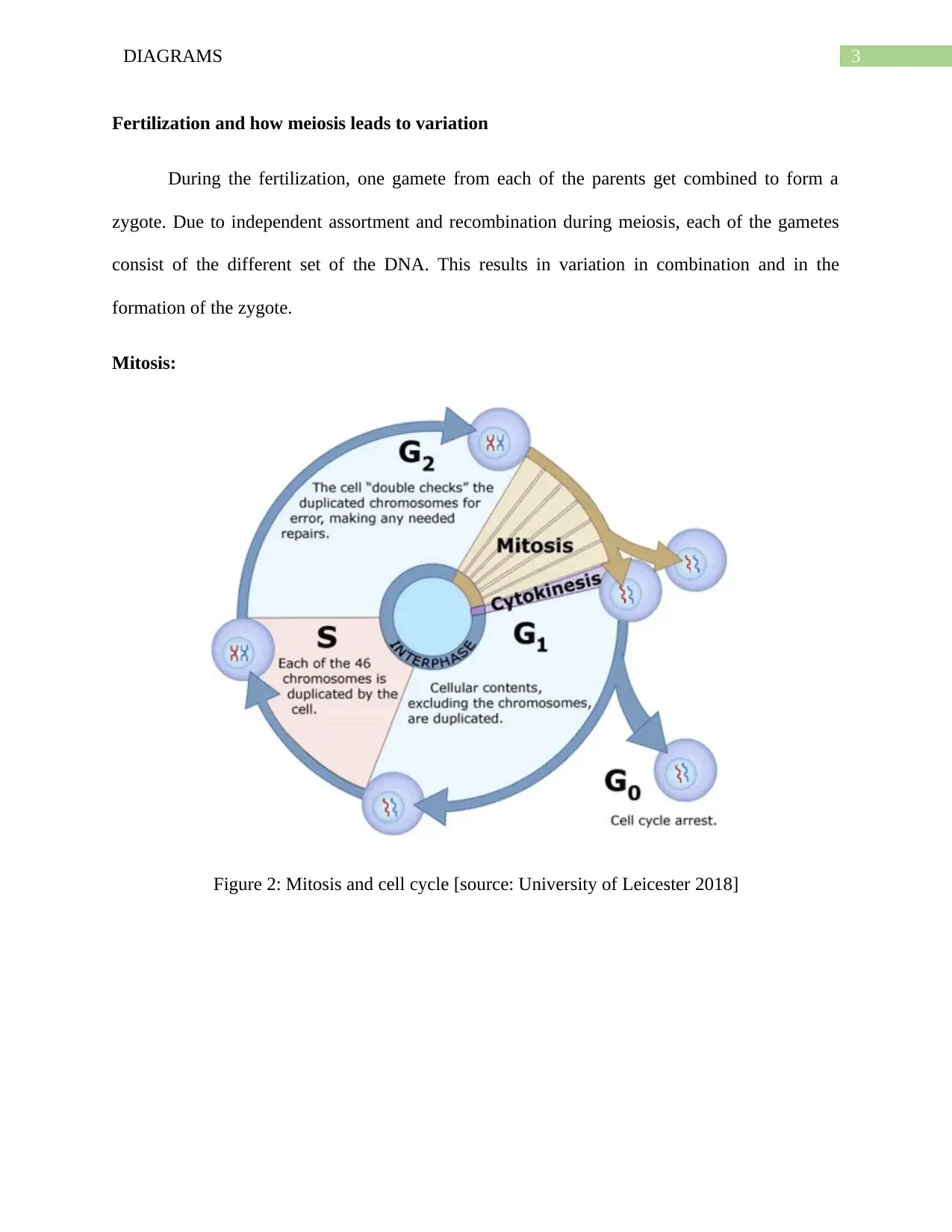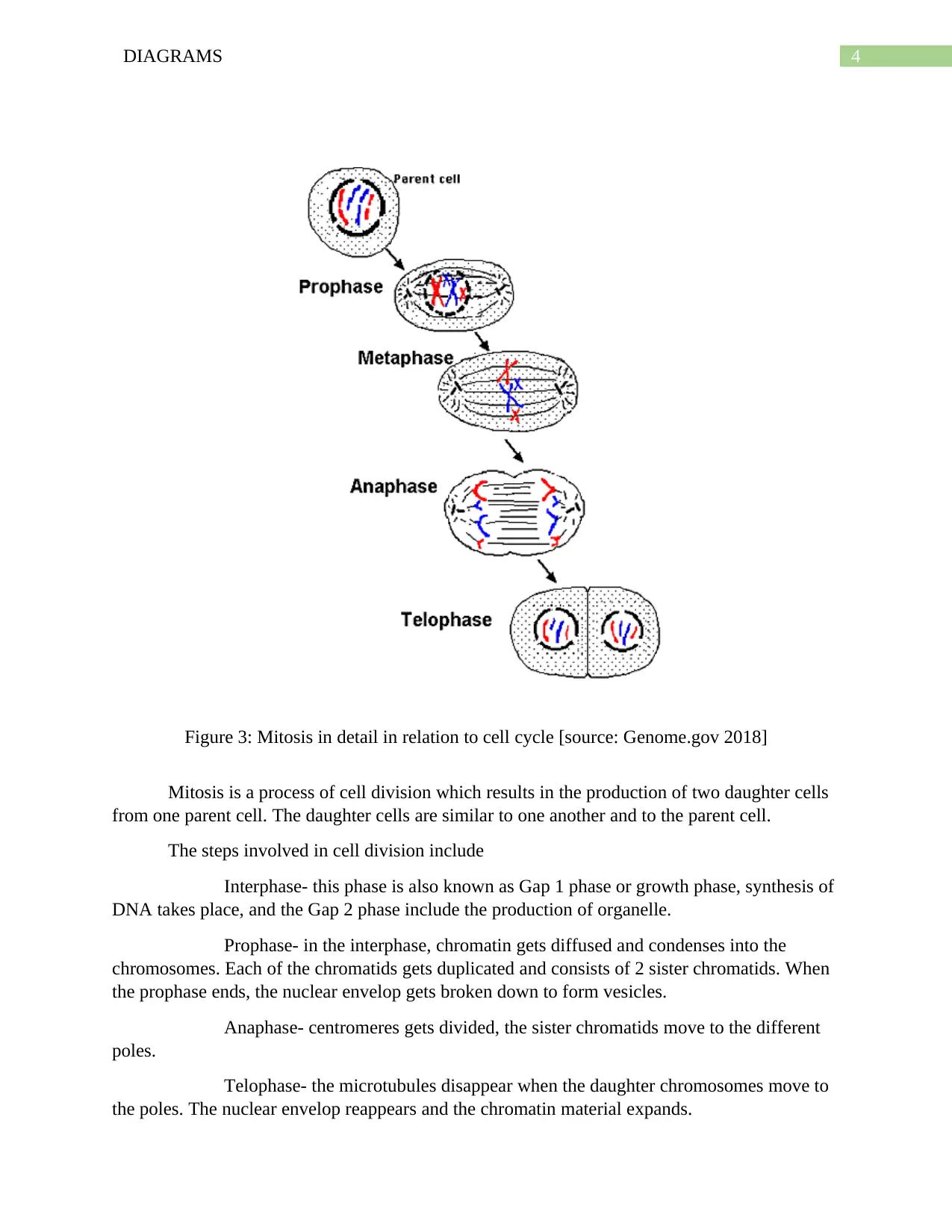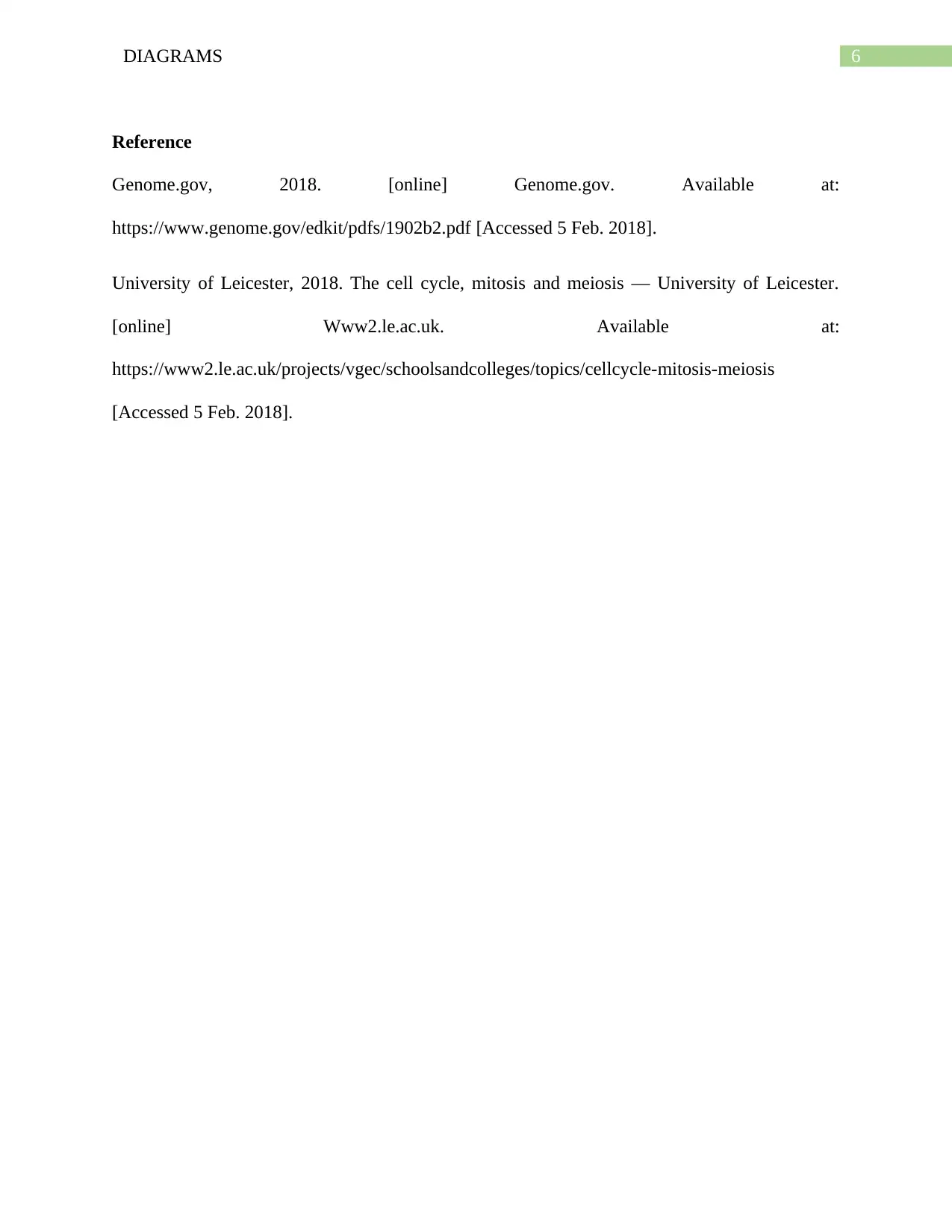Cell Division: Meiosis, Mitosis Diagrams & Genetic Cross Analysis
VerifiedAdded on 2023/06/15
|7
|659
|127
Homework Assignment
AI Summary
This assignment provides a detailed overview of meiosis and mitosis, including illustrative diagrams that highlight the various stages of each process. Meiosis is explained with a focus on gamete formation, emphasizing the creation of four haploid daughter cells from a somatic cell and the importance of independent assortment and recombination in generating genetic variation during fertilization. The stages of meiosis, including Prophase 1, Metaphase 1, Anaphase 1, Telophase 1, Metaphase 2, Anaphase 2, and Telophase 2, are thoroughly described. Mitosis is presented as a cell division process resulting in two identical daughter cells, with detailed explanations of Interphase, Prophase, Anaphase, Telophase, and Cytokinesis. Additionally, the assignment includes a genetic cross problem involving green and yellow peas, demonstrating the calculation of genotype and phenotype ratios in the F2 generation. The solution illustrates the principles of Mendelian genetics and the expected outcomes of a dihybrid cross.
1 out of 7














![[object Object]](/_next/static/media/star-bottom.7253800d.svg)